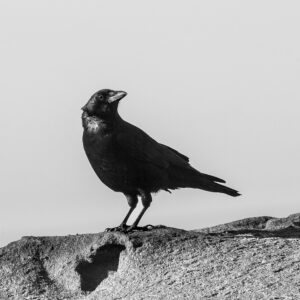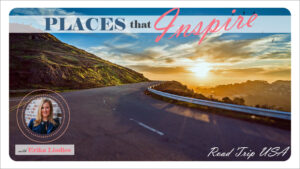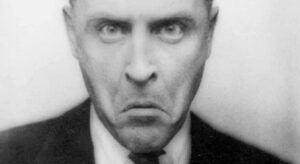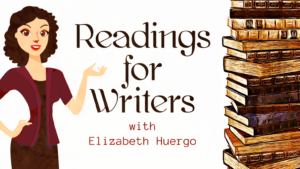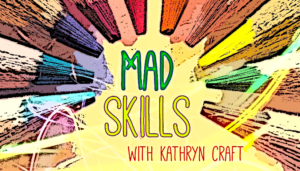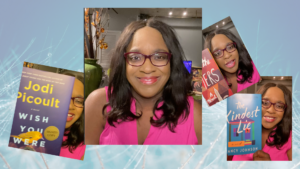Inspirations
Note: This post does not contain a happy ending.
In Seattle, June is the cruelest month. Terrifying. Violent, too. A month where people rarely leave their homes, and if they must, they hurry from house to car, exhaling only once safely inside, windows rolled up, doors locked. In June, schools forgive truancy. Non-urgent appointments–dental check-ups, meetings with financial planners, eyebrow shaping–pretty much anything other than trips to the ER–are put off until mid-July.
Have you seen Hitchcock’s film, The Birds? Hitchcock himself claimed, “It could be the most terrifying motion picture I have ever made.”
I bet Hitchcock was inspired by Seattle in June.
Because of Poe’s quothing ravens, I’ve always found crows a bit sinister, but in general, I had no beef with any corvids, not really, until June 2013. While walking to get my daughter at school, a crow–out of nowhere–slapped me across the back of the head with a rolled-up magazine. At least, that’s what it felt like.
The June 2015 NPR story, “They Will Strafe You,” taught me these attacks are common. I was simply in the wrong place (near the crow’s fledglings) at the wrong time (June, fledgling season). This particular crow, undoubtedly sleep deprived and struggling with postpartum depression, deemed me a threat. Thus, she grabbed her June 2013 issue of The New Yorker, or perhaps The Economist, or maybe it was The New Republic, and whacked my head.
I began to fear another strafing.
“No eye contact, people!” I’d yell at my children, my husband, my dog, whenever I saw a crow. “You make eye contact, and THEY WILL STRAFE YOU!”
The whole world was starting to feel unsafe, and not just in June. Year-round, I felt the beady eyes of crows upon me.
Fast forward nine (terror-filled) years, and we arrive at Spring 2022.
At the end of May, bunion surgery left me horizontal with my sad, swollen foot in the air. For weeks, I crutched only between the TV room sofa and my Room of Convalescence. Back and forth, forth and back.
Bedridden and homebound, I could not escape their terrible cawing, could not ignore the murderous shadows that darkened my windows. Twenty-three days post-op, loopy with a weird mix of boredom and fatigue, tired of my POW status, I raised my fist at the crow-laden spruce in my yard.
“Nevermore!” I shouted. “NEVERMORE!”
After Googling “what do crows eat,” (the answer: “pretty much anything”) I crutched to the kitchen and found a box of stale, generic-brand Wheat Thins. […]
Read MoreAs I write this, I’m sitting in a cabin in Sunriver, Oregon warming my feet by the fire. The sun is about to break above the pines, where a cloudless summer sky awaits. In a few hours, I will be standing at the top of an ancient volcano that forged rocky spires and calderas to create the local landscape. By the time you read this I will be in Wyoming, peering into the bubbling blue depths of Yellowstone’s geysers.
These days, I live and work in motion. My husband and I are on a crisscross-country road trip we built out of our travel bucket list. If you were to trace our route on a map, it would look like a drawing of poorly hung Christmas tree garland draped back and fourth and up and down the United States.
Life on the road has been inspiring (like discovering the raw, untamed beauty of northern California’s coast), challenging (like when all the trails near Mt. Hood, Oregon were buried in snow IN JUNE), surprising (like when we stumbled across Norah Jones giving an outdoor concert in Bend, Oregon as the sun set over the mountains), and exhausting (from long workdays followed by intense hikes).
Above all, this road trip has been full of enriching experiences and powerful lessons that translate beautifully to life and writing. Today, I thought I’d share a pocketful of those experiences with you along with the lessons I’ve learned and ideas we can all use to connect more deeply with our stories.
Unexpected flooding taught me the easy path is rarely the most rewarding.
The experience: We were hiking through a fern canyon in northern California when we discovered the trail before us had been washed away and was covered in several inches of water. Rather than turning back, we decided to forge ahead by hopping from rock to rock and tiptoeing across fallen trees.
How it made me feel: Frustrated that our dry path was underwater, followed by childlike delight from the fun of spotting alternative routes and the challenge of navigating a natural obstacle course. And finally, victorious at making it through the wet parts with dry boots.
What I learned: The easy path is rarely the most rewarding. Some of the best views and experiences are discovered during detours.
How it applies to writing: When you encounter an obstacle in your story, look for hidden paths in unexpected places. If you don’t immediately see them, look again through the eyes of a child or from the viewpoint of different characters. Shifting your perspective can help you see challenges from new angles and notice solutions you may have overlooked.
Spotting this little whitebark pine growing in a lava field made me contemplate the untapped power within each of us.
The experience: We were exploring a 1,500-year-old lava field in central Oregon when I spotted a lone whitebark pine growing in the obsidian.
How it made me feel: Inspired by the little tree’s grit, independence, and minimalistic needs.
What I learned: If that little tree can thrive in a place that’s been devoid of life for thousands of years, perhaps we […]
Read MoreAs a novelist, all the book ideas I’ve ever contemplated hinge on an element of climate crisis, not by choice, but because these stories rise up as manifestations of my own climate anxiety. Stories about our global environmental emergency are simultaneously existential and minute.
They are urgent.
I would use the same words to describe The World as We Knew It: Dispatches from a Changing Climate (Catapult), a new anthology of personal essays about the impacts of climate change on the essayists’ lives edited by Amy Brady and Tajja Isen. Stories about drought in Arizona. Invasive species that change ecosystems. Nostalgia for absent fireflies. Hurricane Katrina.
This book is urgent.
But what makes this collection stand out among other anthologies addressing the climate crisis is the sense of urgency coupled with intimacy. The quality of the storytelling elevates the content in ways that inspire me as a fiction writer.
The all-star list of contributors includes some of the most compelling climate communicators of our time, both in fiction and nonfiction, including climate justice essayist Mary Annaïse Heglar, one of my favorite voices communicating about the climate crisis. In her voice, the complicated feels personal, terrifying, tender, and memorable. She contributed an essay called After the Storm about her family’s experience during and after Hurricane Katrina which will stay with me for a long time.
Novelist Omar El Akkad (American War and What Strange Paradise) contributed an essay about the devastating consequences of climate change and development in Qatar where he grew up, and his concern not only for our future but for our ability to preserve the past. Stories layered in stories. Urgent.
I read The World as We Knew It as a concerned citizen of this fragile planet and as a reader who appreciates powerful writing, but I also read the essays to study the architecture of compelling storytelling.
I read a lot of books on the craft of writing fiction. I subscribe to a long list of writerly newsletters and podcasts. Although The World as We Knew It is a collection of essays, not a book about writing, I’m shelving it with my books on the craft of writing because as I embark on writing my third novel, I anticipate returning to these essays many times as reminders of the power of urgent, intimate storytelling.
I reached out to the editors, Dr. Amy Brady, the Executive Director of Orion and the former Editor-in-Chief of the Chicago Review of Books, and Tajja Isen, the author of Some of My Best Friends: Essays on Lip Service and an editor for Catapult Magazine. They responded to my questions together, so their answers are in the ‘we’ form.
Julie Carrick Dalton: How did you choose the writers to include in your anthology?
Amy Brady and Tajja Isen: We collaborated on an initial dream list and were bowled over when most of the writers we contacted said yes! It was a mix of folks who had already published on climate, and those whose work we loved but hadn’t explicitly published in that space before. Their contributions, we felt, offered an exciting opportunity to expand what “climate writing” looks like, connecting the dots between the climate crisis and other narratives both global and personal.
JCD: Who is your intended audience?
AB […]
I can’t tell you how stuck I was at the beginning of May. Some of it was the pandemic—certainly we’ve all had the feeling over the last two-plus years that we’re living our lives on repeat. Some of it was my age (late-middle) and life stage (children launched, parents gone, contemplating my next steps). Some of it was my creative life; after writing three novels, I started painting then writing poetry, all while toying with writing another novel but I kept getting stuck. So last month I went to Spain and walked 110 miles of the Camino de Santiago, from the small town of A Guarda on the Portuguese border to Santiago.
Walking the Camino jolted me out of my stuck-ness and helped me reset, in ways I’m still figuring out. The things I took away from that experience apply to writing as well as to life. So if you’re feeling stuck in your current WIP or stuck in another area of your life (and those two are often related, aren’t they?), here’s what I can tell you:
Sometimes it’s good to figure things out as you go along. I did almost no preparation for this trip. I didn’t read about the Camino or study the route or research where to eat dinner or what to see. I got up every day and packed my bag and ate breakfast and walked, with no idea what might lay ahead—completely the opposite of my usual, thoroughly-prepared approach to life. And it was fantastic. From windswept paths along boulder-strewn beaches to ancient cobblestone roads to painted yellow lanes on the sides of busy asphalt roads—it was all new, and all fresh and interesting. Even if you’re a plotter, this can work well in your writing, too. Get up one day and see where your writing takes you, without a plan.
It’s OK to get lost. Yes, I got lost several times, once going a mile the wrong way along a busy road, another time taking a wrong turn in the woods. Sometimes it was hard and frustrating but sometimes getting lost led to unexpected discoveries, like the elderly man out walking his dog who wanted to lead us back to the Camino himself, or the sun-dappled grove of eucalyptus trees we would have missed if we’d stuck to the main trail. The detours you take in your writing may be lost pages, or they may lead you to exactly the place you need to get to. Time lost is not necessarily time wasted.
You know more than you think you do. I don’t speak a second language, but I did spend six months learning Spanish with the Duolingo app before I went to Spain. I didn’t expect my limited Spanish to carry me far, but it got me through checking in and out of hotels, ordering meals, and most importantly, asking for directions and understanding the answers. It certainly stretched me. If there’s something with your writing—a new POV, a different structure—you’ve been studying or contemplating, dive in and try it. Think of it as the metaphorical equivalent of speaking a language you barely know in a new country.
Have a destination. Having a goal, a point to the journey, made every step of […]
Read MoreWe’re thrilled to have returning guest Danielle Davis on Writer Unboxed today! Danielle has had dark fantasy and horror published in Andromeda Spaceways Magazine, The Astounding Outpost, and multiple anthologies. You can find her on most social media under the handle “LiteraryEllyMay” and at her website, literaryellymay.com
It’s Not Me, It’s the Story
Have you ever reached a point where you couldn’t see the path forward while writing your story, and found yourself saying, “What is wrong with me?” It’s an easy trap to fall into, to see our stories as a projection of ourselves and to equate our story’s perceived value with an internal sense of worth. We put so much of ourselves into our writing that it’s a natural tendency to create an inflated sense of connection between the two and to take it personally when the story doesn’t want to work the way we want it to. This, in turn, drains motivation and makes it hard to move past those negative feelings.
In her TED Talk, “Teach Girls Bravery, Not Perfection,” Reshma Saujani provides the anecdote of a friend who is an instructor at the University of Columbia. During office hours with his computer science students, he noted that men struggling with an assignment would say, “Professor, there’s something wrong with my code.” But when the women came in, they said, “Professor, there’s something wrong with me.”
This resonated with me. I, too, struggle with the culture that Saujani coins “perfection or bust” when I’m working on a story. I often beat myself up about not being further along as an author or tell myself that it’s a personal failing on my part. I tell myself that mine are pipe dreams and I’m just not cut out for this work. It’s a pervasive thought, that you aren’t enough, and if you’re not careful, it can fester and grow into a writer’s block that sticks.
Not too long ago, after wrestling with a sudden dead-end in my WIP, I went to my husband and lamented, “It’s not working out. I think I’m just not the writer for this story.” He very quickly (and correctly) called me out about it. Talking with him made me realize that it wasn’t ME. I wasn’t the failure. Elements in my story needed to be improved. A few tears and several days later, I realized what wasn’t working and made the necessary corrections. And it began to move again.
In the process, I began to identify several ways to fight that sense of personal failure and inadequacy:
Read More
If it takes a village to raise a child, it requires a community to create a book.
If you are a part of the Writer Unboxed UnConference alumni group, you probably know I had a book launch this week. But what you may not know is that DARLING GIRL is my second book. My first, EVENFALL, came out 11 years ago.
Yes, you read that right.
That first book was a quiet one, and although I received some lovely reviews, it slowly sank from sight. But, hey, I wasn’t ALL that worried. I’d sold a book, so how hard could it be to sell another?
You already know where this is going. It was pretty damn hard.
Part of that was me — I didn’t write a new manuscript quickly enough. My kids were young, I was still freelancing for paid assignments, and writing a second book, which might have benefited from being one of my top priorities, fell to the bottom of my list. And then when I finally did finish it, my agent felt, rightly, it was too long and cumbersome. I cut it in half, cut it again, then hired an editor to help me trim it once more.
Despite my best efforts, it didn’t sell. Maybe my first book had been a fluke, a one-off. Maybe I wasn’t a writer after all.
I went to a WU UnConference and felt, at first, like a fraud. And then I went to the open mike night and listened to people reading their work — people brave enough to get up and share the stories they’d created, whose work blew me away. I discussed craft with people who were brilliant and whose grasp of how to write was nuanced and profound. I talked sales and strategies and marketing with authors who had years of experience.
Some of these people were unpublished, some self-published. Some were with big houses, and some used a hybrid platform.
All of them were writers.
It was inspiring at a time when I desperately needed inspiration. It gave me the courage to amicably part ways with my agent, to start a new book, to believe I could tell a story again.
But the Writer Unboxed community gave me more than the motivation to take my writing seriously. It also gave me concrete tools. I’m terrified that I’ll forget to mention someone, so I’m not naming names here, but members helped me with plotting my next book. With figuring out character motivation. With revising. With seeing with fresh eyes what needed to be changed in the eighth, ninth, and tenth draft.
When I queried new agents and received requests for fulls but no offers, Writer Unboxed members were there to pick me up, to encourage me not to give up, to tell me to write another draft and try again.
They were there to cheer me on when I landed my dream agents. To encourage me when I went through yet ANOTHER round of drafts with them.
And to celebrate loudly and wildly when, […]
Read Morephoto adapted / Horia Varlan
Every element in a story must be necessary, suggests the dramatic principal known as “Chekov’s gun”: If you put a gun on the wall in the first act, it should be used before the end of the play. That’s equally true for any unusual detail. If you introduce a Waterford crystal vase in a trailer home, or a caged boa constrictor in the house where your character picks up his babysitter, it will grab your reader’s notice and make her wonder, Hmm, what’s that about?
Because your reader will assume that detail is a sign pointing toward the story to come, its presence (or even its sudden absence!) will add an undercurrent of tension to any scene taking place in that room. Dialogue can foreshadow as well. One of my favorite examples is a line from Edgar Allan Poe’s short story, The Cask of Amontillado, when the protagonist says, “I shall not die of a cough,” and the antagonist who will later wall him up in the wine cellar says, “True—true.”
Yet even if you’re a dogged outliner, you may still discovering your novel’s identity in early drafts. How can you presage events that are yet to take place?
The easy answer is that you can’t. As you move through your first draft, the details you’re using are meant to build the kind of world in which your story could reasonably take place, and characterize those who will people it.
Once you know the story’s destination, though, you can go back and add in some signage along the way. Exploring how your favorite authors use foreshadowing to set up and guide their story is a great reason to immediately circle back and reread a novel you just finished.
Here are some structural issues that can be addressed with effective foreshadowing.
Problem 1: Too many questions
When a new reader arrives at the dark house of your story, the polite thing to do is to turn on a light in the foyer so she can orient to the new world she’s entering. A less confident author will switch on every light in the house—and then, fearing the reader may be bored, add the outdoor floods, too. The reader, who had hoped to be ushered into a specific kind of house featuring a specific kind of conflict viewed through a specific perspective, is now blinded by the light of details that raise so many different kinds of questions that she has no sense of this story’s nature.
Overwriting is a relatable first-draft syndrome as you build a new story world. But once you know the story all the way through to the end, you’ll have to weed through that verbiage and dig out the pertinent details that will raise the story-relevant questions you want the reader to hold in mind. Specificity is important: a rare ancient Chinese hand cannon on the wall of a history scholar’s office is going to raise a very different question than the Kalishnikov on the wall of a retired CIA operative.
Tip: Look for clues your own mind may have planted in your first draft, as your subconscious is a powerful creative partner, and as such, may already have foreshadowed the story to come. The second draft is a […]
Read MoreFiction implies a made-up world, but for some novelists, their books are rooted in real events. WU contributing author Nancy Johnson offers examples of contemporary novels that explore some of our shared experiences. Check out her video here.
Do you center your own fiction around real-life events? If so, what have you learned in the process? As a reader and writer, how do novels help you make sense of the real world around you?
Read MoreI’m noticing a new trend among writers, and I think it’s a hopeful sign. I see it popping up in my own groups, in Writer Unboxed posts and, interestingly, at the recent AWP Conference I attended in Philadephia. Scurrying from panel to panel and listening to writers confer at booths on the book fair floor, I kept writing down one phrase that emerged as the focus of everyone’s conversation and writing practice:
“Find the fun.”
People said it in panels about struggling to write their next work after having had some success. But more and more writers, no matter what their stage, were talking about the necessity of reclaiming a sense of play; forgetting about publication, agents, even readers; and learning to play with words again.
We’ve been stuck in a state of “getting by” for so long. Now, it feels like something has shifted. We seem to have collectively decided that enough is enough; we need to get back to our writing…and we are all discovering that grand ambitions for white-knuckling it through the next project aren’t going to work anymore.
Rachel Swearingen, author of How To Walk On Water found herself asking, “What does fiction do? What do I have to offer?”
Sound familiar?
These are not trivial questions.
And so we need to be gentle with ourselves.
We need to remember why we’re doing this.
We need to get serious about finding the fun.
As someone who has run a very silly challenge since 2010 (write a story a day in May), I am constantly thinking about why I ask people to do it. And a very big part of the answer is because it is so silly.
But the serious side is there too: When you are trying to write at that pace, you must find ways to keep it fresh.
So I’m sharing some of the best ways I’ve found to keep writing fun…and flowing.
Make It Harder to Write Well
Fear is at the root of all writers’ block; mostly a fear that our writing won’t live up to our own expectations.
So let’s lower those expectations.
I like to do this by putting limits on my writing that make it very hard to expect I’m going to write a work of art.
You might write a story that must:
Celebrate the ‘Unknowing’
Julie Carr, author of the essay collection Climate, made herself write every day for 2 years and only allowed herself to read what she had written every three months. She doesn’t necessarily recommend being so extreme, but her aim was to sustain a sense of being in the unknown for as long as […]
Read MoreRecently, multi-published author and long-time Writer Unboxed reader Leslie Budewitz reached out to share her experience after reading one of David Corbett’s posts here at WU. David’s words inspired an opening for her, which led to a breakthrough in her process. Could she share what she’d written? Of course, yes. After reading Leslie’s wonderful essay, how could we resist publishing it here? I think you’ll agree it is generous and empowering. Our thanks to Leslie for sharing!
More about Leslie from her bio:
Leslie Budewitz blends her passion for food, great mysteries, and the Northwest in two cozy mystery series, the Spice Shop mysteries set in Seattle’s Pike Place Market, and the Food Lovers’ Village mysteries, set in NW Montana. The latest is Carried to the Grave and Other Stories: A Food Lovers’ Village Mystery (May 2021). As Alicia Beckman, she writes moody suspense, beginning with Bitterroot Lake (April 2021) and continuing with Blind Faith (October 2022). A three-time Agatha-Award winner, she is a past president of Sisters in Crime and a current board member of Mystery Writers of America. She lives in northwest Montana with her husband, a musician and doctor of natural medicine, and their gray tuxedo cat.
Learn even more about Leslie and her work on her website, and by following her on Facebook and Instagram.
When I read David Corbett’s post on the difficulty of writing these days, “Distraction, Focus, Silence,” it came at the end of a week in which I had managed to get to the novel in progress every day, but never for very long. I’d revised a few pages, finished a chapter, started a new one. But I couldn’t focus and I was seriously unhappy about it. To see a friend confess his struggles was both disheartening and reassuring.
Then I read the comments. What struck me were the quotes that boil down to this: We let ourselves be distracted from the work because the work makes us uncomfortable.
Bingo! I’d long realized I tend to leave the page when I don’t know what happens next. All too often, a brief break becomes a long one. To overcome that, I’d devised a strategy of leaving my desk but keeping the story problem consciously in mind. And it worked. The kitchen sink would barely be half full of water when the answer would bubble up and I’d have to dash upstairs to make a few notes before finishing the dishes.
In the current season of distraction, though, that wasn’t working. You have to stay on the page long enough to run into the sticky situation for the unsticking solutions to work.
I wrote two books in 2020, and another book and a pair of short stories in 2021. I’ve had three books come out since the pandemic began and have two coming out in 2022. Why, after working steadily through the shutdown, two summers of wildfires and smoke (we live in the woods in the Northern Rockies), the political and social turmoil, am I struggling now? When we got Covid in November 2020, I took two weeks off, then picked right back up and finished the WIP. (Oh, the advantage of […]
Read MoreWhen writing a new novel, the idea usually finds its way to me through a historical tidbit or unexplored emotion that sticks like a pin in my psyche. If I find myself searching the internet on the topic instead of doing whatever is clearly on my To Do list, then I know… maybe this could be something.
I’m sure many of you have found yourself in a similar situation. We creative types love the first sip of fresh story water. It’s what keeps us coming back to the well! But it’s the effort of cranking down the bucket in the seemingly bottomless dark that can leave me frustrated. I often pull up my rope, drop my chin to my chest, and proclaim: “It’s dry, the well is dry! I’m never going to drink again. I’m going to die of thirst. It’s over.”
(Note: This may only be my overwrought response.)
When really, what I need to do is wait a beat. Let the rains come. Let deep waters stir. Allow the well to fill up organically. This was the case when I started writing my forthcoming novel Mustique Island. I had just published Marilla of Green Gables and my agent and editor asked, “What’s next?”
There is nothing more terrifying than that question when you don’t have an answer. It doesn’t matter what career you’re in. Writers to surgeons to tumblers in a circus, it’s the same. “I don’t know” is a terrifying declaration. But I honestly didn’t. As my husband will attest, when the ability to BS (blow smoke—of course!) was handed out on the soul manufacturing line, I did not receive. I show all my cards. I don’t know how to be any other way. So, I couldn’t even fake-it-till-you-make-it.
Instead of going to the well and cranking down, down, down, willing the bucket to smack story waters, I took a breather. I stepped away from my desk and gave myself permission to be a student explorer of history again.
It was while watching a PBS documentary on Princess Margaret that I first discovered the Caribbean island of Mustique. Princess Margaret’s Lady-in-waiting Anne Tennant and her husband Colin gave a piece of the island to the new Count and Countess of Snowdon as a wedding gift. Later, during her unhappy marriage, it became a sanctuary for the Princess to “do as she pleased.”
Cue the psychic pin: I had never heard of Mustique Island, and I grew up in the Caribbean. My mom is Puerto Rican and most of my extended familia continue to live on the island. I felt a sudden sense of not-knowing curiosity and yes, maybe even slight defensiveness. This was a secret island full of secrets in a place I called home.
It’s like that moment when you realize that your mother who has always been ‘mom’ had a life before you re-named and claimed her ‘mom.’ You’re re-meeting a person/place that you already have an innate kinship with. It was a strange and catalyzing experience. I couldn’t focus on anything else but gleaning everything I could about Mustique Island and what exactly “do as one pleased” entailed.
The well was filling up.
Here are some areas to delve into if you’re standing beside your writing well, feeling empty and unknowing.
Read More

